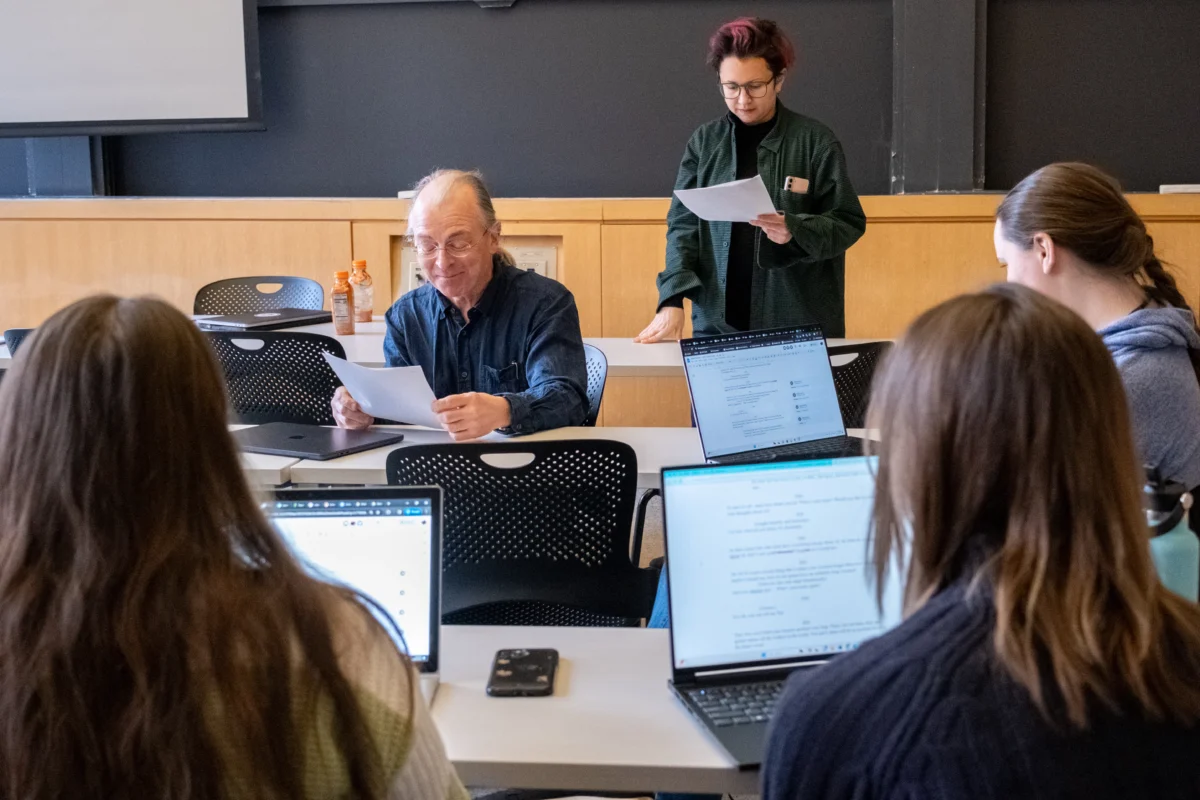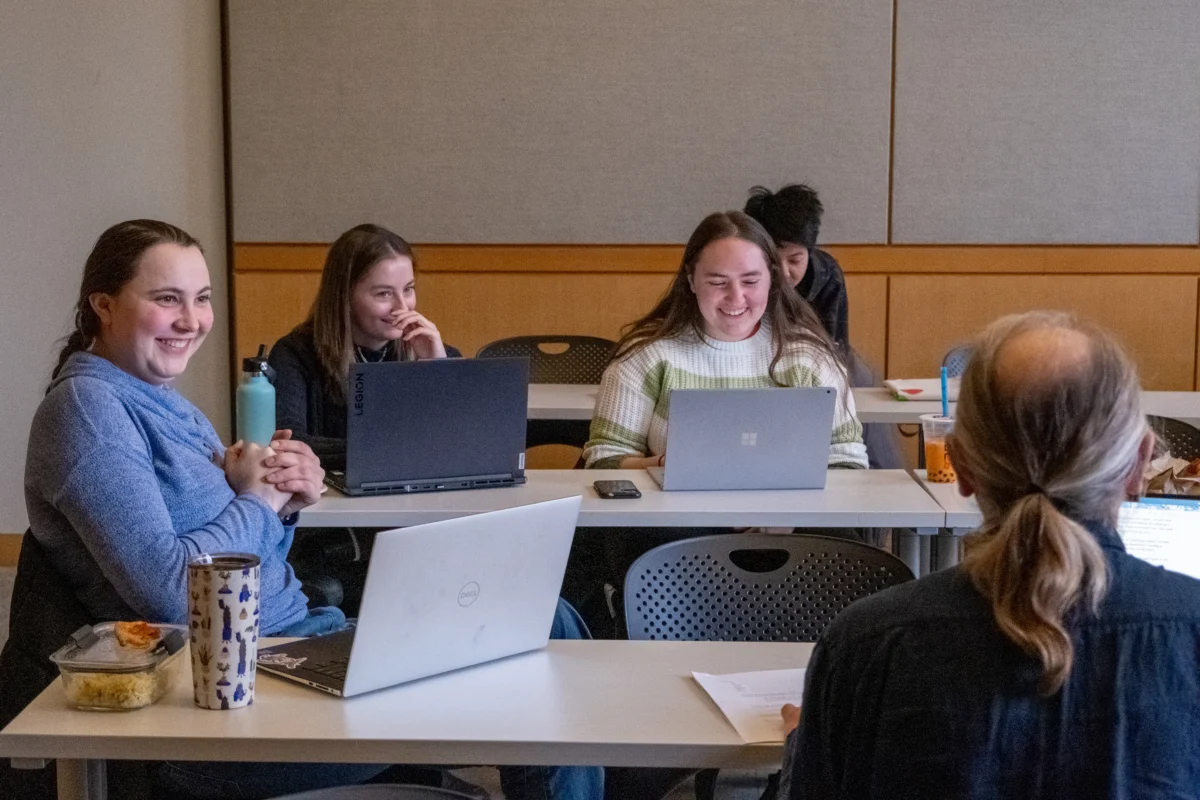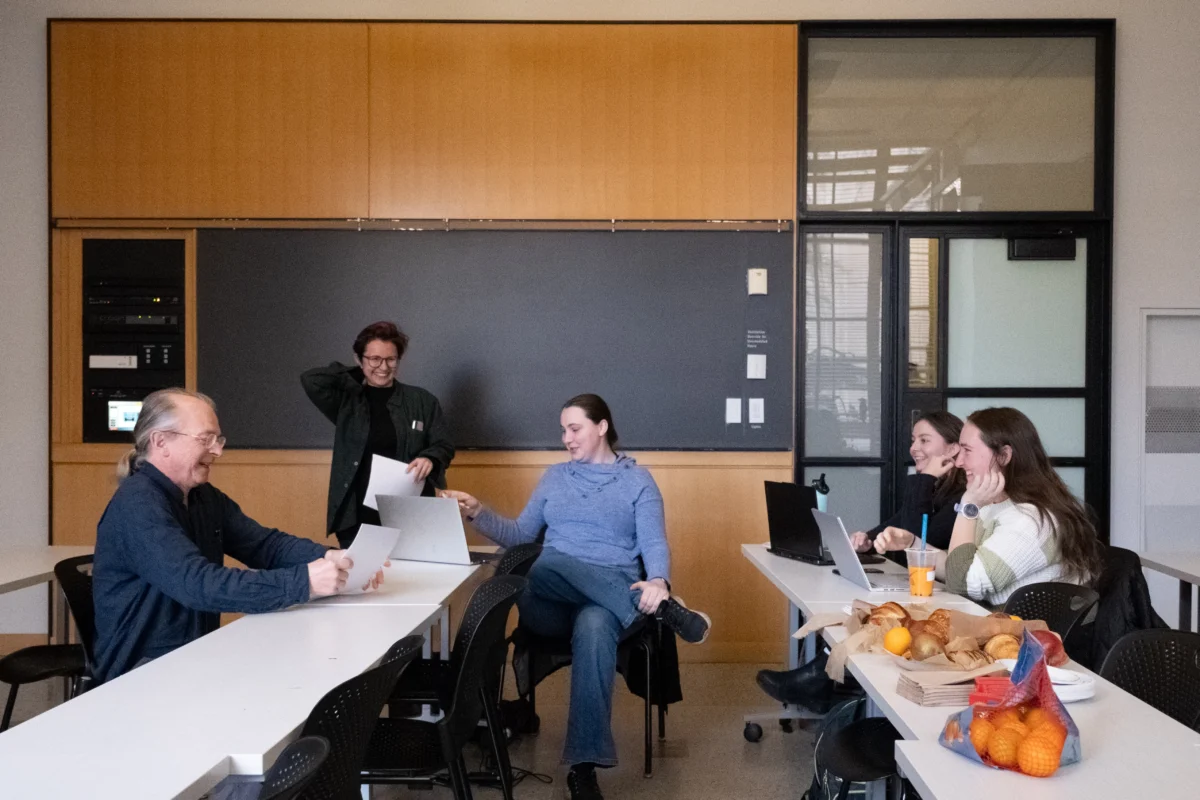“I love reading science fiction,” says Nigel Shen, a first-year graduate student in Computational Science and Engineering and Mechanical Engineering. “But the science fiction I love the best is written by people who have a firm grasp on science. That gives them the tools to explore the frontiers of the human imagination.”
Shen was able to explore his passion for science fiction—and to deepen his understanding of science—in “The Art and Science of Time Travel,” a cross disciplinary class offered for the first time this past fall. Supported in part by the MIT Center for Art, Science & Technology (CAST,) the course offered students a solid foundation in the science of time travel in relativity and quantum mechanics, then assisted them in crafting time travel narratives and representations in short fiction, sketches, and scripts.

The Origin Story
“I was walking down the Infinite Corridor, against the sunset, and I saw a flyer from CAST inviting faculty to design a new course,” says Michele Reilly, Scientist-in-Residence in Quantum Mechanical Engineering, and co-founder, along with Professor of Mechanical Engineering Seth Lloyd, of “The Art and Science of Time Travel.”
“Seth and I had been working together on foundational questions in physics, including the possibility of time travel,” says Reilly. “It is a topic that only a few scientists have looked at. And there is no consensus, only open questions.. I suggested we create a course that uses science fiction to explore these open questions, and maybe help point to new inroads through these break points in science.”

Time Travel Present, Past, and Future
The concept of time travel is as old as human history. Stories about traveling from present to past to future appear in Hindu, Jewish, Christian, and Islamic traditions, and in myriad national legends. In the 20th century, the idea gained new traction with Einstein’s theory of general relativity, which allowed for the possibility of closed timelike curves—trajectories or paths through spacetime that, in theory, would allow travel from the present to the past. Yet the theory of closed timelike curves has proven problematic; several of their characteristics seemed incompatible with other parts of Einstein’s theory.
“I thought there was a simpler way to approach the subject using quantum theory,” says Lloyd, whose collaboration with Reilly began in 2013. “We started looking at an extreme version of quantum teleportation. By definition, quantum teleportation can transmit an object’s quantum state—an electron’s spin, or a photon’s polarity—from one location to another. What if we could use that concept, combined with Einstein’s equations, to dematerialize an object and have it rematerialize in the past. What if a blend of general relativity and quantum mechanics were the solution that made time travel possible?”

Lights Camera Action
Funded with an Interdisciplinary Class Development Grant from CAST, Reilly and Lloyd began designing their new course. The first half of the course would focus on science—readings about relativity, quantum mechanics, and time travel, readings in science fiction, all supplemented with lectures by Reilly, Lloyd, and other MIT researchers. “Lots of universities offer courses on writing,” says Maya Felice Harris, a first-year master’s student in the Technology and Policy Program. “But only at MIT could you have a course on time travel and have a world authority on the subject like Seth explain the science of it to you.”
The second half of the course centered on writing. For the final class project, the instructors asked students to collaborate on a script for a short film about time travel that Reilly and Lloyd were planning to shoot in Berlin in 2024. The pair had made a previous short film about time travel, titled “Steeplechase,” that won several awards, including honors at the 2022 Cannes Film Festival. “Knowing our work was going to end up in a film definitely upped the ante on our project,” says Aquila Simmons, a first-year graduate student in Mechanical Engineering. “Writing is such a crucial skill, especially writing about science in a way that will satisfy experts in the field but still be accessible to readers or viewers who don’t have that specialized knowledge.”
Initially, the instructors had envisioned a more traditional science fiction narrative for the final class project. But the spirit in class soon veered towards satire. And the instructors went with the flow. Soon the students were working together on a comedy script—a weekend update newsroom sketch about time travel and an impending Artificial Intelligence apocalypse. “The students learned to poke fun at the paradoxes they learned about in class,” says Reilly. “Much of the course unfolded the way I expected it would. What I didn’t expect was that these students would be such talented writers. They’ve made my life as a film director much easier.”
Along with a grounding in theoretical physics, Lloyd believes the students also acquired a new ability for teamwork. “MIT students are very good at collaborating on problem sets,” he says. “Writing isn’t normally a collaborative venture. But they brought the same spirit of enthusiasm and inquiry to script writing that they would bring to problem sets. And they ended up writing things that are much better than most of the time travel science fiction you can find.”
Editorial direction by Leah Talatinian, Arts at MIT
Written by Ken Shulman

